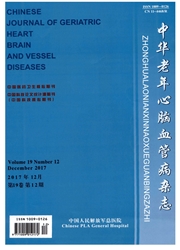

 中文摘要:
中文摘要:
目的观察脑缺血后处理中,联合水蛭注射液进行后处理,对脑缺血损伤大鼠磷酸化蛋白激酶BmRNA及其蛋白表达的影响。方法SD大鼠40只,随机分为假手术组(s0组)、缺血再灌注组(I/R组)、缺血后处理组(IPOC组)、IPOC+水蛭注射液后处理组(P-L组),每组10只。采用线栓法制备大鼠大脑中动脉闭塞模型及IP0c模型,应用实时荧光定量PCR和Westernblot法检测磷酸化蛋白激酶mRNA及其蛋白表达。结果s0组有少量磷酸化蛋白激酶mRNA及蛋白表达;与SO组比较,I/R组表达明显升高;与I/R组比较,IPOC组表达明显升高(P%0.01);与IPOC组比较,P—L组表达明显升高(P〈0.05)。结论IPOC可能通过诱导磷酸化蛋白激酶的表达发挥其神经保护作用,水蛭注射液可进一步促进其表达而发挥神经保护作用。
 英文摘要:
英文摘要:
Objective To study the effect of combined leech injection and ischemic postconditioning on expression of p-Akt mRNA and protein in rats following I/R injury. Methods Forty male SD rats were randomly divided into sham operation group, I/R group, ischemie posteonditioning group and leech injection postconditioning group (10 in each group). A middle cerebral artery oc- clusion model and an isehemie posteonditioning model were established by Longa occlusion. Ex- pression of p-Akt mRNA and protein was detected by RT-PCR and Western blot, respectively. Results Only a mall amount of p-Akt mRNA and protein was expressed in sham operation group. The expression level of p-Akt mRNA and protein was significantly higher in I/R group than in sham operation group,in ischemie postconditioning group than in I/R group, and in leech injection postconditioning group than in ischemie postconditioning group (P〈0.05). Conclusion Ischemic posteonditioning can protect nerves by inducing p-Akt expression and leech injection postconditioning plays an important role in protection of nerves by further promoting its expression.
 同期刊论文项目
同期刊论文项目
 同项目期刊论文
同项目期刊论文
 期刊信息
期刊信息
